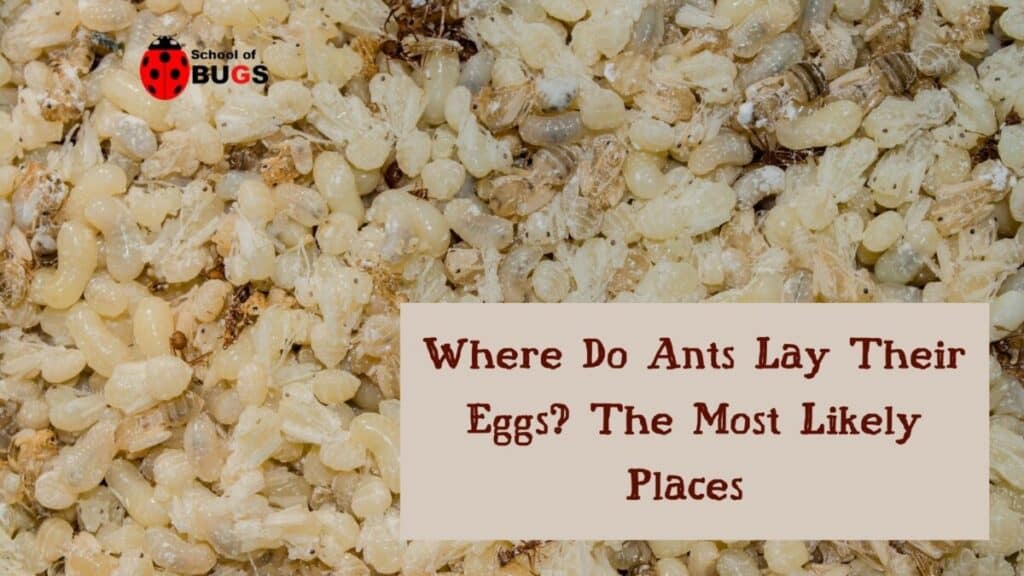
Ant infestations are awful. Who wants to have countless ants milling around the place? Of course, to prevent that from happening, you need to be able to prevent the ants from breeding. This means knowing where their eggs are located.
On this page, we will look at the following:
- Where ants lay their eggs
- How you can spot ant eggs
- Whether there is any difference between ant species
Where Do Ants Lay Their Eggs?
Ant species are different (more on that in a short while). This means that the locations where they lay their eggs will differ.
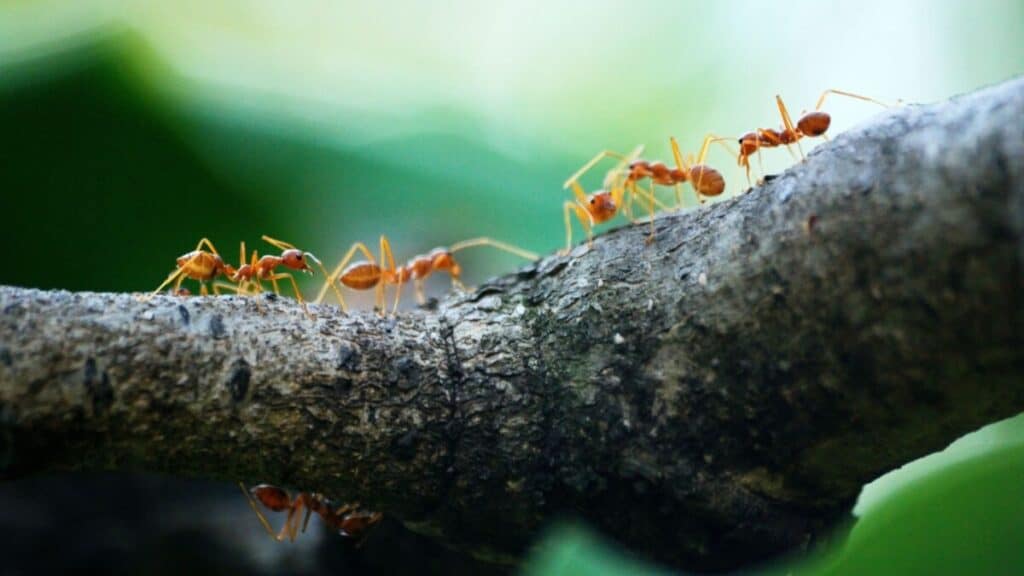
Of course, in this section, we are going to go through some of the most common nesting locations of ants. This is where their eggs are most likely to be.
How Ants Nest
If you can remember back to your High School science classes, then you will probably have an idea about how ants nest already. Ants are formed of colonies. You have one or more queen ants, and the rest of the ants are going to be workers.
Queen ants are the only ants that can lay eggs. Because the queen is responsible for ensuring that the ant nest continues to thrive, the queen ants remain in the nest at all times. They just lay their eggs and do not do much more other than be worshipped by the worker ants.
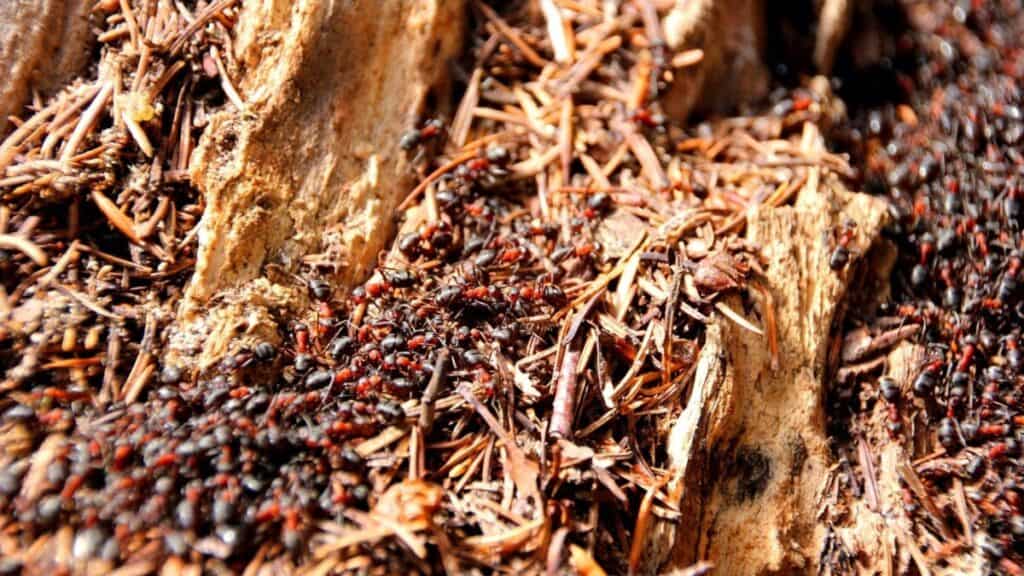
The job of the worker ants is to…work. Worker ants will have a variety of different roles. Some will collect food. Some will tend to the young.
Others will continue to build the nest. If you see ants out and about, then it is almost certainly going to be a worker ant.
All of the eggs are going to be located within the ant’s nest. They will be properly protected because, once again, eggs are important for the ant nest to thrive.
They do need to keep producing new ants, after all. Because the ant eggs tend to be pretty protected (and sometimes buried underground), you may not ever encounter ant eggs. Although, this is something that we are going to also discuss in a short while.

General Locations
We will expand upon the specific locations that you may find the ants nesting in shortly. However, for the most part, any location would need to meet the following requirements:
- It protects the ants (i.e. they are not going to lay their eggs out in the open)
- The location has water (dampness helps here)
- The location has a food source.
Depending on the ant species, they can opt to nest in one of three different locations:
- Indoors
- Outdoors
- In the soil
There is a little bit of overlap between the latter, although as we dive into the next couple of sections, you will start to see why.
In Your Garden

Outdoor ant species love to nest in your garden. While they can burrow underground, most will find a secluded location where they can lay their eggs. Some of the most common places for ants to lay their eggs in a garden include:
- Lawns
- Plant beds
If the ants are hanging around plant beds, then it is likely that they will dig a small hole underneath them. This will provide them with access to a network of tunnels that can provide proper protection for both the ant eggs and the queen.
Obviously if the ants are burrowing under your plants, then there is a good chance that they will end up ruining them too. Most plants aren’t fans of having ants chomp through them, after all.
Under Stones and Paving Slabs
Ants are tremendous burrowers.
As we said before, there is a little bit of an overlap between ants that live outdoors and those that live underground. It is here that we see this overlap.

Ants that live under paving slabs will burrow into the loose mortar. They will then nest just below the paving slab where, typically, there is going to be some soil that they can hang around in.
Many people class these ants as ‘outdoor ants’, while others class them as underground ants. Honestly, it probably isn’t going to make too much of a difference. At the end of the day, ants are ants and they are going to go wherever they want.
Trash Piles
Ants need food so, for some ant species, they will tend to lay their eggs pretty close to (or in) trash piles.
You have to remember that ant eggs take a lot of food to develop. In fact, a good chunk of an ant is fat. This is how ants are so strong in comparison to their size.

So, if ants spot a lot of food near trash piles, then you can bet your bottom dollar that they are going to try and build a nest around there.
Of course, this is something that doesn’t always work to the advantage of the ant. After all, trash piles can get moved.
Although, thankfully, because of that, trash pile eggs are probably going to be some of the easiest to destroy.
Rotten Wood
Rotten logs are a surefire bet for ants. These places often contain a lot of food, and they will provide ample shelter for the little creatures.
Some ant species may also nest in rotten wooden beams around your home. Those who have old sheds in their garden may often find that ants make a beeline for them.
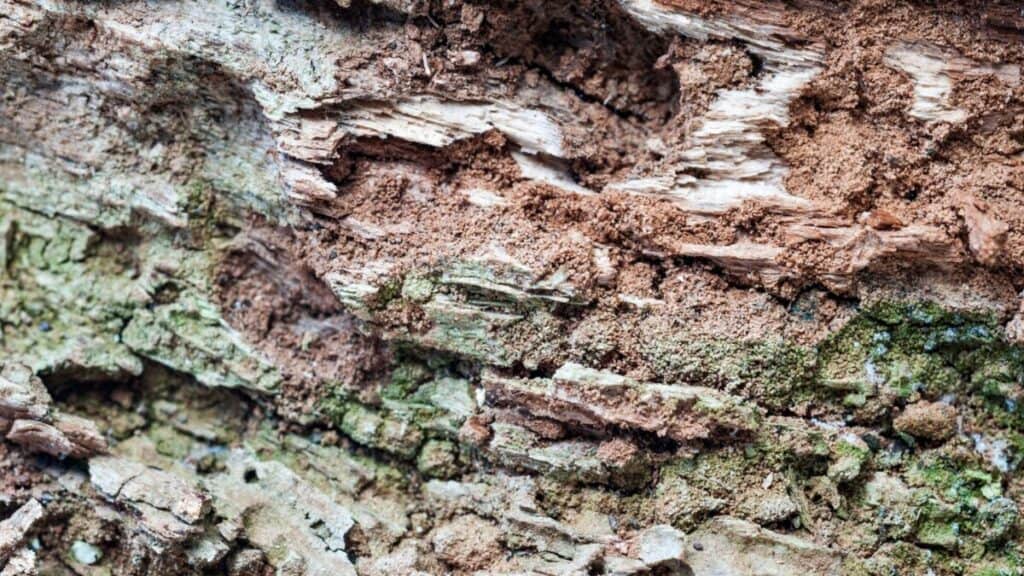
You may even notice a few ant eggs on the walls, particularly if you don’t spend a whole lot of time in the shed (the ants need to feel protected, remember?)
In Walls
Some ants prefer to live indoors. Here, they are often looking for warmer locations. This means that you may, on occasion, find that ants have laid their eggs in the walls.
They will often open up a small hole in your wall to get in there although, in most cases, they will probably just try and look for an open hole that they can crawl right on through.
Under Floors In Home
As with the walls in your home, some ant species may also like to nest under the floor. Quite often, this is going to be much easier for them to access, particularly if you have floorboards rather than cemented floors. A bit of carpet isn’t going to stand in the way of an ant either.
Dark, Damp Locations In Your Home
Honestly, any dark and damp location in your home is probably going to be great for the ants. We have seen them lay eggs in places as varied as under cupboards, and even in coffee machines that aren’t being used.
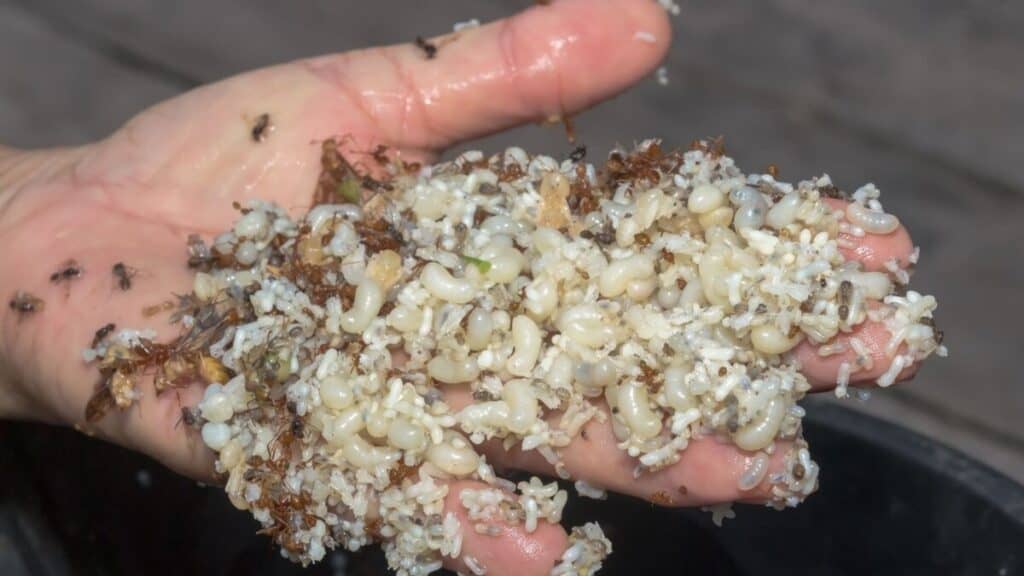
Leaf Litter
Argentine ants (found in some places in the US) are pretty much the only ant species that will use the leaf litter for their nesting.
Generally speaking, they won’t nest in the leaf litter properly. Instead, they will dig a nest underneath, and the leaf litter is more to provide them with a little bit of protection.
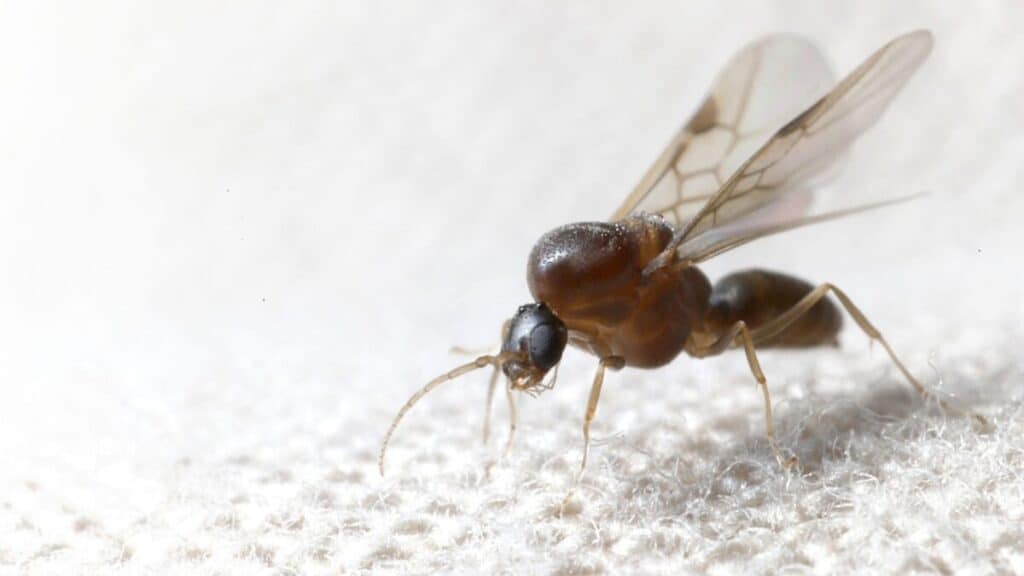
Nests Of Other Ants
We know that this doesn’t tell you exactly where those ants are nesting, but we do think that it is worth us pointing out.
There are some ant species that are willing to nest just about anywhere. These are known as thief ants (a pretty apt name, don’t you think?).
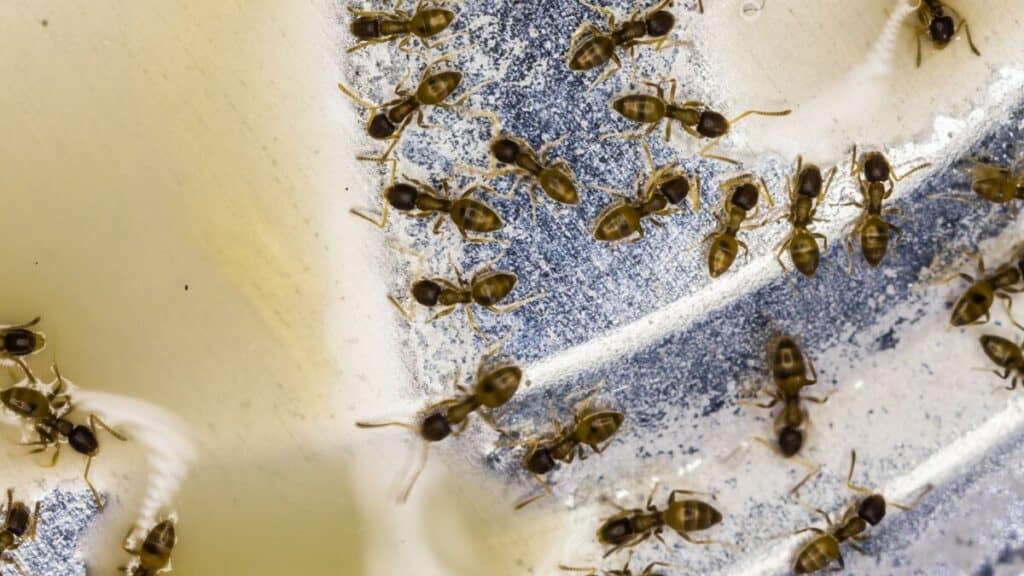
This means that they can nest in pretty much any of the locations that we have listed here. This does mean that if you know that you have thief ants, it is going to be pretty difficult to check where their eggs are located.
Is There a Difference Between Ant Species?
Yes. Different ant species lay their eggs in different locations. For example, Pharoah ants tend to live in damp, warm locations. Thief ants prefer to look to take over nests populated by other ants. Black ants are fans of lawns and around plant areas.
This is not to say that ant species won’t look into other locations beyond where they would normally nest. However, if you do have a rough idea about the type of ants that you have kicking around your home or your garden, then you are going to find it a whole lot easier to track them down.
How Do You Know Whether You Are Looking At An Ant Egg?
Unless you see some ants hanging around, you can probably never be certain that you are looking at an ant egg. This is because many insect eggs look the same.
However, we can give you a few ideas of the sorts of things that you are looking for. This way, if you have managed to uncover a nesting location for the ants, you will be able to tell whether there are eggs there or not.
Ant Eggs

Ant eggs tend to be small and white. They will be oval.
They are a bit tinier than a worker ant. In most cases, you are going to see them grouped up into bundles of eggs.
Once again, because ant nests thrive on ensuring that the eggs survive, you will often find a lot of worker ants hanging around the eggs, trying to protect them. While it certainly is possible, it is very rare that you will find ant eggs completely unguarded.
Ant Pupae
While they are not ant eggs, we do want to point them out. This is because ant pupae sort of look like ant eggs.
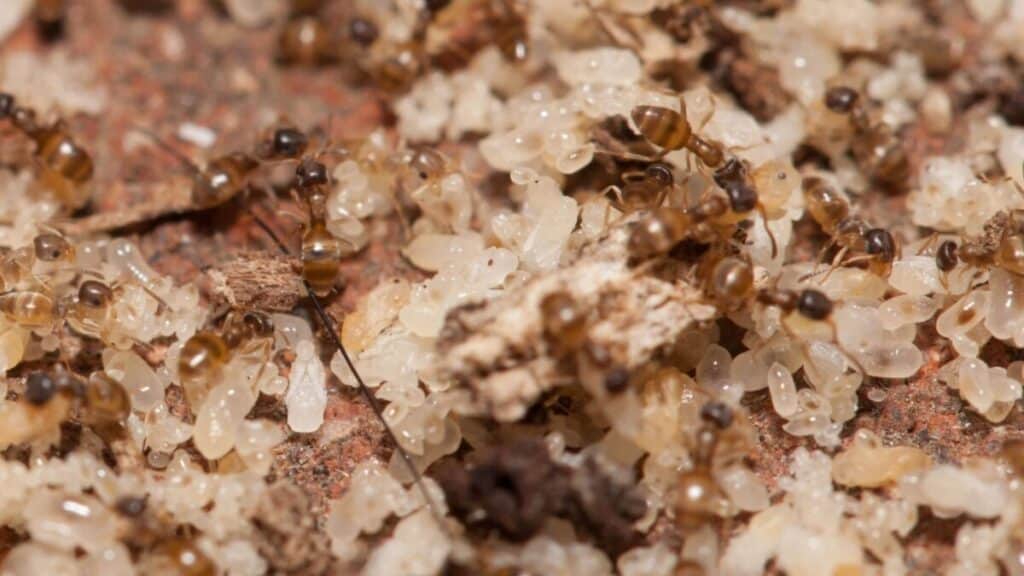
Ant pupae is the ‘cocoon’ stage of an ant’s growth. It is the final stage before an adult worker ant emerges.
Ant pupae are larger than worker ants. They tend to still be oval and white. However, you will find that they are much, much longer than ant eggs. They won’t be grouped quite so much.
You can be sure that you are looking at ant pupae if you look at the end of the cocoon and there is a black dot on the end.
When ants are in a pupae form, it is only a short hop until they become adult ants.
Conclusion
Ants can lay their eggs pretty much anywhere. It will be dependent on the species of ant that you are dealing with. However, in most cases, ants are going to try and lay their eggs in locations that are cool and damp.
They will also want to have ready access to food. You will rarely see ant eggs. This is because the ants want to ensure that they are properly protected.
Alright, that’s it for this article, here are a few hand-selected articles that you might also find interesting reads:
Fun Facts About AntsDo Ants Live in the Walls of Your House?
How to Get Rid of Ants in Brickwork (Complete Guide)
References
http://liveoak.agrilife.org/files/2011/07/House_Infesting_Ants_Management_15.pdf
Recent Posts
Tiny Black Bugs in Bathroom NO WINGS: What They Are and What to Do!
Finding tiny black bugs in your bathroom can be uncomfortable, to say the least. Especially if they are persistent, or they appear in very large numbers, which they often like to do. When it...
Tiny Black Bugs in Plant Soil - What Are They & What To Do About It
A short horror story: You get a new houseplant. You do your best to take care of it. You’ve ensured that it has the right soil, the right amount of sun, it gets enough water. And then one day, you...

